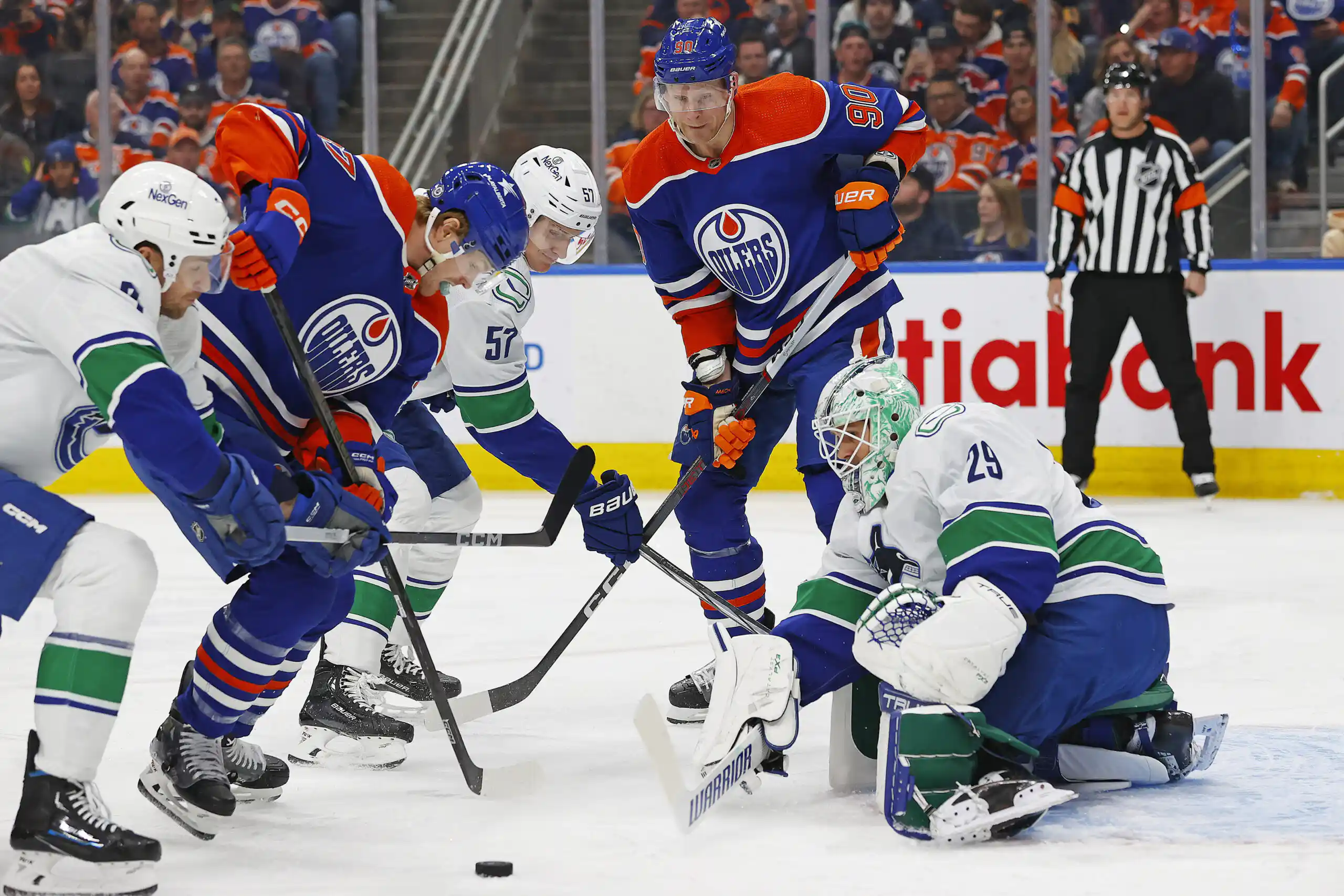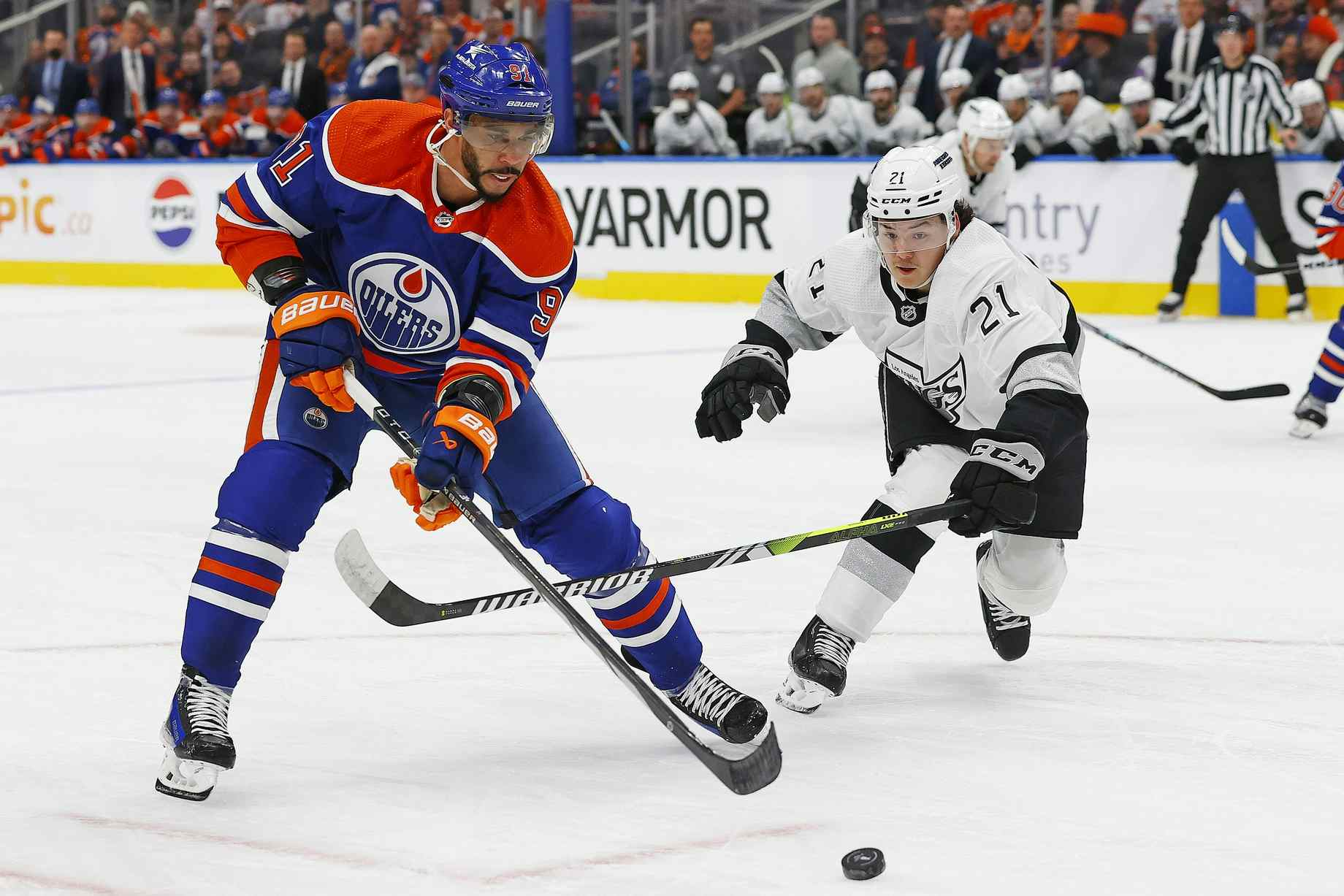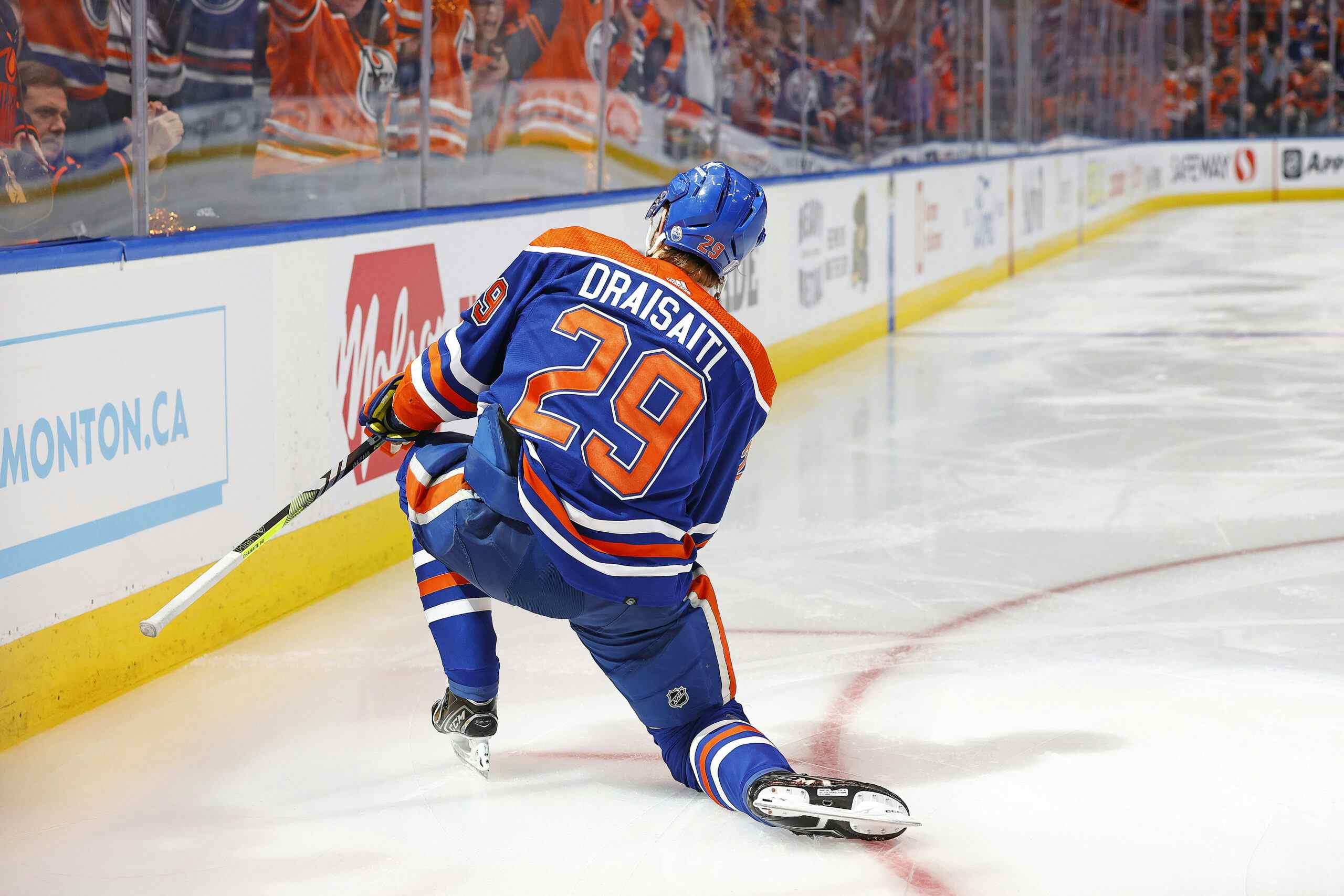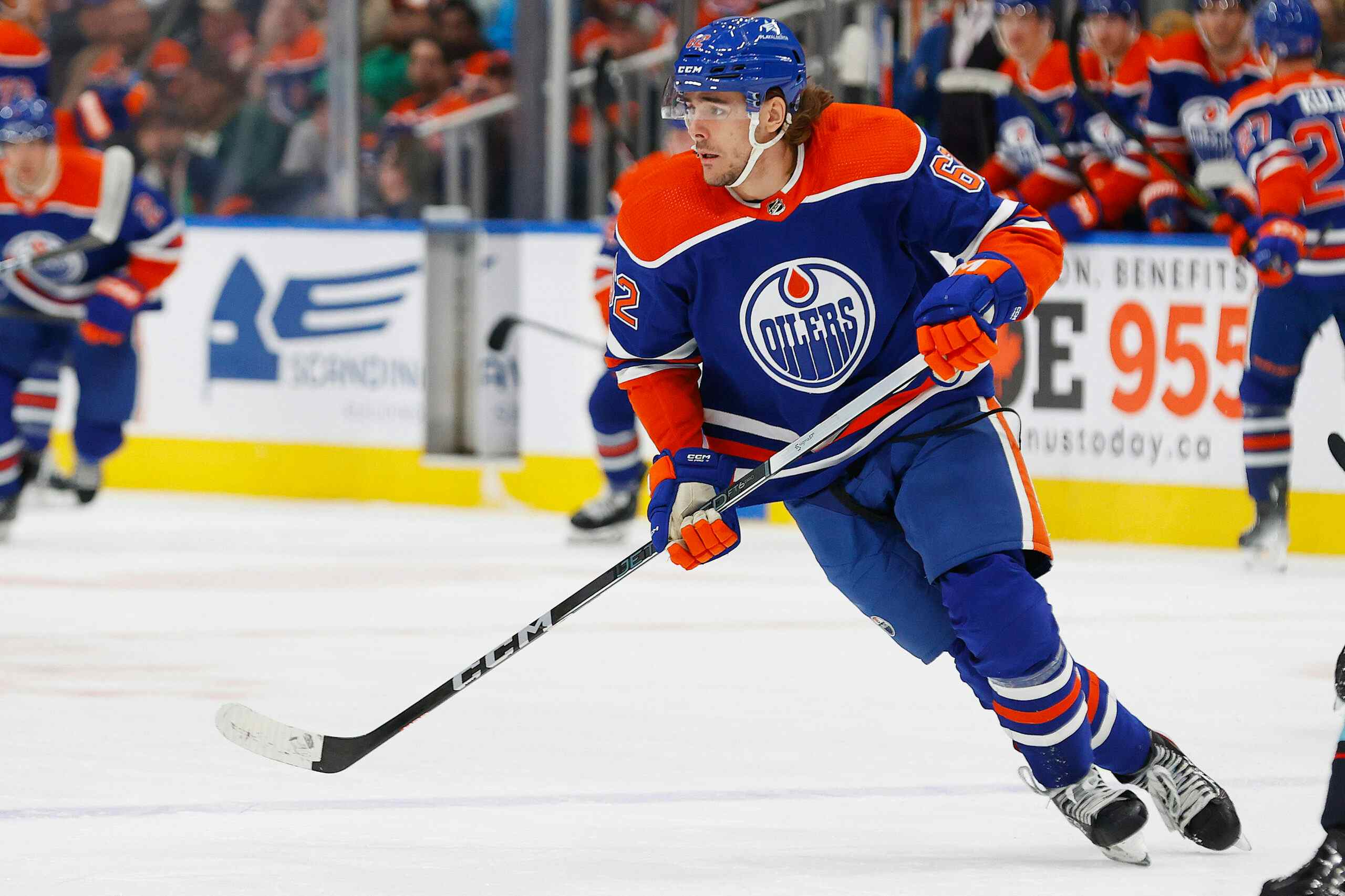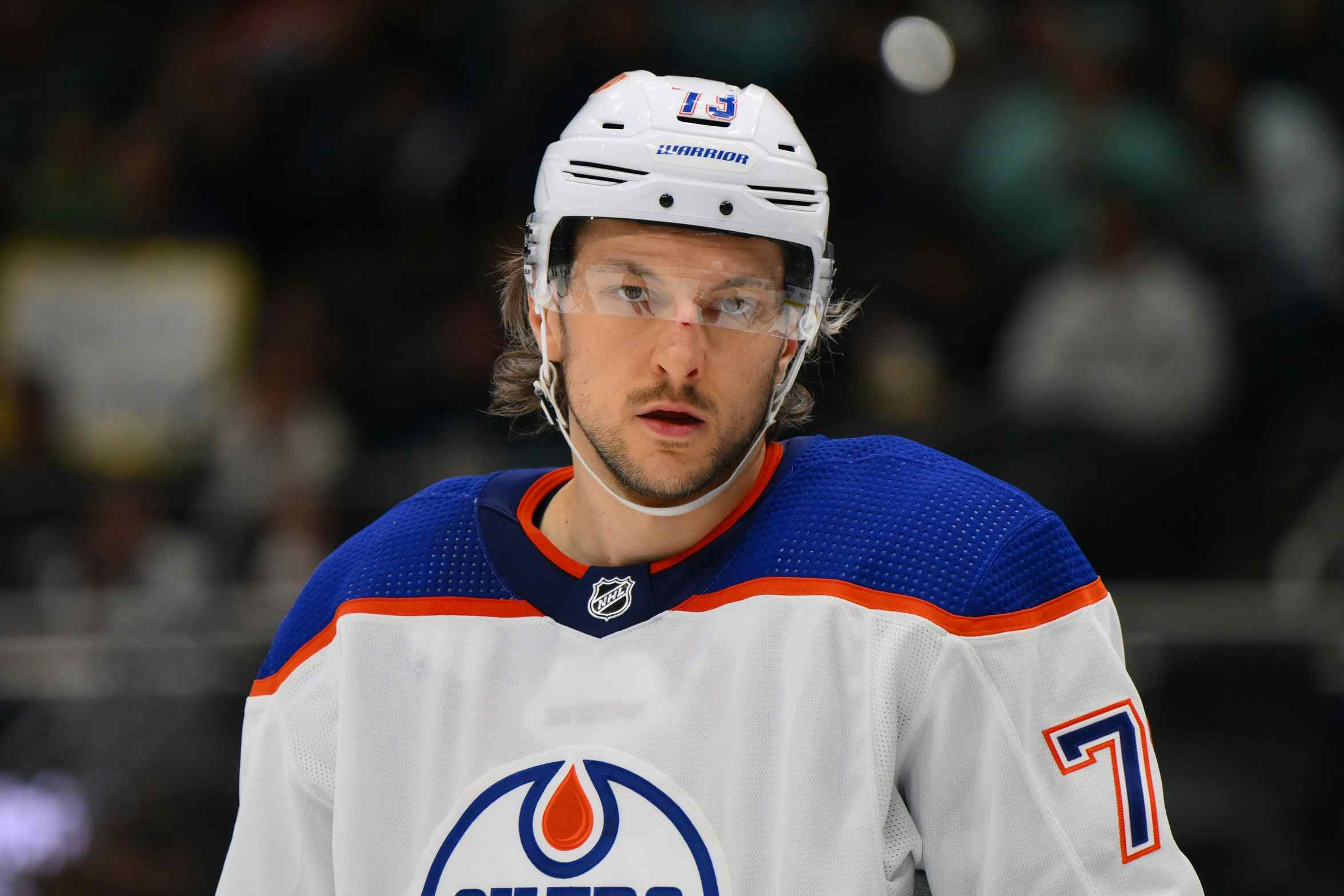Future (Restricted) Free Agents: Leon Draisaitl
By Cam Lewis
7 years agoWith a three-point performance last night in Philadelphia, Leon Draisaitl upped his season total to 25 points, good for 15th in the league and second in the Pacific Division behind only teammate Connor McDavid.
This is an excellent sign for the Oilers, obviously, because Draisaitl is producing like the player the organization hoped he would become when they drafted him with the third overall pick back in 2014. But with Draisaitl’s entry-level contract coming to an end this summer, the team is quickly going to have to determine whether or not he’s done enough to warrant a long-term contract.
How good is he?
Since entering the league in 2014, Draisaitl has scored 33 goals and 52 assists in 138 games, good for a 0.62 point-per-game pace. If you take away his rookie season in which he was only on the team because Craig MacTavish couldn’t be bothered to assemble a roster with actual NHL veteran depth, that number jumps to a very impressive 0.75 points-per-game.
This definitely looks like a player you’d want to lock up to a long-term contract. But slow down for a second. Draisaitl has produced at a very impressive clip, but he’s also spent his career playing with some incredibly talented forwards. Is he the one driving the team’s success when he’s on the ice? Or is he just the benefactor?
Over the past two seasons, when adjusting for score and zone, the Oilers are taking 52.2 per cent of the total shot attempts when Draisaitl is on the ice. Unlike most high-level offensive producers, his +2.7 relative Corsi For percentage is the result of the team generating more shot attempts for and fewer against when he’s on the ice than when he isn’t.
With other high-level producers, you usually see that positive relative shot attempt figure driven by simply Corsi For, as the team opens up the game and gives a little bit up defensively in order to produce offence. But in Draisaitl’s case, he isn’t giving up too much defensively while still managing to help the team generate shot attempts for, which is impressive for a player his age.
Also, when breaking down Draisaitl’s with you and without you stats from the past couple seasons, you see a player who drives offence. Draisaitl had a good time playing with Taylor Hall last season, as the pair scored 2.80 goals per hour at even strength and put up a 51.6 Corsi For percentage when playing together. But apart, while Draisaitl isn’t scoring at the same rate, he boasts a 52.5 Corsi For percentage, suggesting he wasn’t just being dragged around by Hall.
So, overall, we have a player who’s producing at a high level, has the shot attempt numbers to suggest it’s legitimate, and, based on splits with and without linemates, is clearly not just along for the ride.
How much will he cost?
If you want to figure out what a long-term contract for the former third overall pick will look like, you don’t have to look very far. Over the past year, three forwards from the 2013 draft were signed to long-term deals right after their entry-level contracts. How convenient!
Aleksander Barkov, 2013’s second overall pick, was given a six-year extension in January with an annual cap hit of $5.9 million. Over the summer, Nathan MacKinnon and Sean Monahan, the first and sixth overall picks, were given seven-year deals worth $6.3 and $6.35 million respectively.
How does Draisaitl stack up against those guys?
- Barkov scored 52 goals and 67 assists in 191 games (0.62 PPG) in his first three seasons. He also finished sixth in Selke Trophy voting last season.
- Monahan scored 80 goals and 79 assists in 237 games (0.67 PPG) in his first three seasons.
- MacKinnon scored 59 goals and 94 assists in 218 games (0.70 PPG) in his first three seasons. He also won the Calder Trophy in his rookie season.
Like I mentioned earlier, Draisaitl has scored 33 goals and 52 assists in the first 135 games (0.62 PPG) of his career. And if you take away the putrid rookie season he had when he was unnecessarily thrown into the deep end with cinderblocks attached to his legs, Draisaitl is scoring at a 0.75 point-per-game pace. So if everything continues as it’s going right now, Draisaitl’s long-term contract would realistically land in a similar ballpark to the aforementioned top of the 2013 draft class.
But that 37-game rookie season is important in this situation, so we can’t just ignore it. Even though Draisaitl played the nine NHL games necessary to cost the Oilers one year off of his entry-level deal, he didn’t reach the 40-game threshold for it to count as an accrued professional season. That means, unlike Barkov, Monahan, and MacKinnon who jumped in and stuck immediately, Draisaitl still has five more years of control after this one before he can hit unrestricted free agency.
With the other three comparables, their teams were only eating through four years of control, whereas the Oilers have five more to work with. So while Draisaitl is producing at the same rate as those players who were locked up to similar long-term deals immediately after their entry-level contracts came to an end, he has slightly less leverage.
It’s difficult to find a contract comparable for a player in Draisaitl’s exact situation. Teams don’t usually allow a player to stay in the NHL beyond the nine-game threshold and then send them down before the 40-game one rolls around. So while Draisaitl’s ELC is going to be finished, he’s essentially in the same situation in regards to UFA status as someone who spends one year in junior before after being drafted before breaking into the NHL.
What should the Oilers do?
This is where it gets a little bit difficult.
Virtually every decision Peter Chiarelli and Co. make from here on out has to be done with Connor McDavid in mind. McDavid is producing at the pace everyone dreamed he would when the Oilers drew those magic numbers back a couple years ago, and is eligible for an extension this summer. He still has one more year left on his entry-level deal, but, starting in 2018-19, McDavid is going to be getting paid.
So what do you do with Draisaitl? Sign him to a bridge contract at a reasonably manageable cap hit? Or do you just bite the bullet and sign the contract now, like the team did with Taylor Hall, Jordan Eberle, and Ryan Nugent-Hopkins back in the summer of 2012?
If he’s given a bridge deal, you’re taking the risk of him breaking out and commanding an even bigger annual salary on a long-term as he nears complete free agency. That’s what happened with P.K. Subban in Montreal. They could have signed him long-term, they didn’t, gave him a two-year bridge deal instead, and he went on to win the Norris Trophy and command a $9 million cap hit on his long-term contract. But on the other side of that, the Sabres gave Cody Hodgson a long-term deal after his entry-level contract expired, and then had to buy him out after two forgettable seasons. Closer to home, you could also argue pretty easily that neither Eberle or Nugent-Hopkins has lived up to those $6 million contracts
Like I said, every decision has to be made with McDavid in mind. Not very long from now, McDavid is going to command a massive salary (which is why it’s so critical to win while he’s cheap, but that’s another story for another day). With that in mind, you really can’t risk a player like Draisaitl blowing up like Subban did and commanding a massive salary as they move closer to controlling their own destiny in free agency.
Besides, bridge deals aren’t particularly cheap for good players, either. Ryan Johansen’s three-year bridge deal pays him $4 million annually and Nikita Kucherov took one this summer worth $4.767 million annually. Even Tyler Toffoli’s absurdly team-friendly bridge deal cost the Kings $3.25 million annually over two years.
There’s obviously appeal to the bridge deal because it forces a player not to get complacent in the short-term, it keeps things slightly cheaper than it would with a long-term deal, and it avoids the risk of the premature, underserved contract that ends up haunting the franchise for years. But Draisaitl isn’t the kind of player you want to jerk around with to save a couple million dollars in cap room over the next few seasons. This is a player who’s already producing at a high level, has underlying numbers to indicate he could do even better, and, even at his age, has a respectable all-around game.
The best course of action for the Oilers here is to capitalize on that extra year of control they have. They should offer Draisaitl a long-term extension this summer, but since they’ll only be eating two years of unrestricted free agency on a seven-year deal, they can realistically get him locked up at a lower annual salary than the three comparables from the 2013 draft. While there’s a risk involved, based on what we’ve seen from Draisaitl so far in his career, there’s a very fair chance that contract could end up being a bargain.
Recent articles from Cam Lewis

